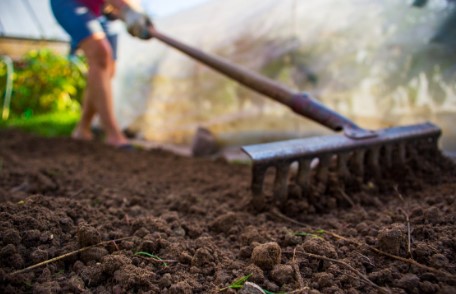Gardening is an art that requires patience, dedication, and a deep understanding of the foundation upon which plants thrive – the soil. Whether you’re cultivating a vibrant flower garden, a bountiful vegetable patch, or a lush landscape, proper soil preparation is the key to unlocking your garden’s full potential. Neglecting this crucial step can lead to disappointing results, stunted growth, and a host of other problems that diminish the beauty and productivity of your outdoor oasis.
Understanding Soil Structure
Soil structure refers to the arrangement and combination of mineral particles, organic matter, and pore spaces within the soil. This intricate composition plays a vital role in determining the soil’s ability to support plant life.
- Texture: Soil texture is determined by the proportion of sand, silt, and clay particles present. Sandy soils drain quickly but lack moisture and nutrient retention, while clay soils hold water and nutrients well but can become compacted and poorly aerated.
- Drainage: Proper drainage is essential for preventing waterlogging, which can lead to root rot and other plant diseases. Well-draining soils allow excess water to percolate through while retaining enough moisture for plant growth.
- Aeration: Adequate air pockets within the soil are necessary for healthy root respiration and beneficial microbial activity. Compacted soils with poor aeration can stunt plant growth and promote anaerobic conditions.
Soil Fertility
Fertile soil is rich in essential nutrients and organic matter, providing the optimal environment for plants to thrive.
- Organic Matter: Decomposed plant and animal materials, such as compost, manure, or peat moss, contribute to soil fertility by improving soil structure, water retention, and nutrient availability.
- Nutrients: Plants require a balanced supply of macronutrients (nitrogen, phosphorus, and potassium) and micronutrients (iron, zinc, boron, etc.) for proper growth and development.
- pH Balance: Most plants prefer slightly acidic to neutral soil conditions, with a pH range between 6.0 and 7.0. Adjusting the soil pH to the appropriate level ensures optimal nutrient uptake and plant health.
Soil Preparation Techniques
Proper soil preparation involves several techniques to create an ideal growing environment for your plants.
- Tilling: Tilling or digging the soil helps to loosen compacted layers, allowing for better aeration, drainage, and root penetration. However, excessive tilling can disrupt soil structure and beneficial microbial communities.
- Amending: Adding organic matter, such as compost, aged manure, or peat moss, improves soil fertility, structure, and water-holding capacity. Depending on your soil’s needs, you may also incorporate specific amendments like lime to adjust pH or gypsum to improve drainage.
- Raised Beds: Constructing raised beds is an effective solution for areas with poor or contaminated soil. By creating a contained growing space filled with nutrient-rich soil, raised beds provide an ideal environment for plants to thrive.
Benefits of Proper Soil Preparation
Investing time and effort into proper soil preparation yields numerous benefits for your garden:
- Improved Plant Growth: Well-prepared soil provides optimal conditions for root development, nutrient uptake, and overall plant vigor, resulting in stronger, healthier plants.
- Increased Yield: Nutrient-rich, well-aerated soil supports robust plant growth, leading to higher yields in vegetable gardens and more abundant blooms in flower beds.
- Water Conservation: Properly amended soil retains moisture more effectively, reducing the need for frequent watering and conserving valuable water resources.
- Pest and Disease Resistance: Healthy plants grown in fertile, well-drained soil are better equipped to resist pests and diseases, minimizing the need for chemical interventions.
The Lasting Impact of Proper Soil Preparation
While the initial work of soil preparation may seem laborious, the long-term benefits make it well worth the effort. Properly prepared soil sets the stage for a low-maintenance, sustainable garden that will flourish year after year.
Reduced Pest and Disease Problems
Plants grown in fertile, well-draining soil are better equipped to fend off pests and diseases. Nutrient deficiencies and waterlogged conditions can weaken plants, making them more vulnerable to infestations and infections. By providing an optimal growing environment, you minimize the need for harsh chemical treatments, creating a healthier ecosystem for your garden and the surrounding environment.
Improved Soil Structure Over Time
Incorporating organic matter and practicing gentle tilling techniques helps to gradually improve soil structure. As organic materials break down, they form stable soil aggregates that resist compaction and erosion. This enhanced soil structure promotes better water infiltration, aeration, and root growth, creating a self-sustaining cycle of soil improvement.
Increased Microbial Activity
Healthy soil is teeming with beneficial microorganisms, such as bacteria, fungi, and nematodes. These microscopic helpers play crucial roles in nutrient cycling, soil aggregation, and disease suppression. By providing organic matter and maintaining well-aerated conditions, you encourage the proliferation of these vital microbial communities, which in turn contribute to the overall health and fertility of your soil.
Water Conservation
Well-prepared soil with ample organic matter acts like a sponge, absorbing and retaining moisture more efficiently. This means you’ll need to water less frequently, saving you time, effort, and precious water resources. Additionally, improved drainage in well-structured soil prevents waterlogging, which can lead to root rot and other issues.
Maximizing Your Garden’s Potential
Ultimately, the effort you invest in soil preparation pays dividends in the form of a vibrant, productive garden that truly reflects your green thumb. Whether you’re growing vegetables, herbs, flowers, or ornamental plants, proper soil preparation ensures that your plants have access to the essential nutrients, moisture, and air they need to thrive.
By prioritizing soil preparation, you’re not just creating a beautiful outdoor space; you’re nurturing a living, self-sustaining ecosystem that supports biodiversity and contributes to a healthier environment. It’s a holistic approach that showcases your commitment to sustainable gardening practices and a deep appreciation for the natural world.
Soil preparation is the foundation upon which a thriving garden is built. By understanding and addressing the unique needs of your soil, you can create an optimal growing environment that supports vibrant plant life. Whether you’re a seasoned gardener or a novice enthusiast, investing time and effort into proper soil preparation will yield bountiful rewards in the form of lush, healthy plants that bring joy and nourishment to your outdoor space.
Remember, the key to a successful garden lies beneath the surface – in the rich, fertile soil that nurtures and sustains life. Embrace the art of soil preparation, and witness the transformative power it holds for your garden’s beauty and abundance.




